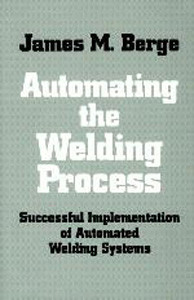Overview Divided into four parts, Programmable Automation focuses on programmable automation technologies used in industry. Comprehensive yet concise, this unique textbook provides a solid foundation of analytical techniques to justify automation and the knowledge and instruction of how to program computer numerical controlled (CNC) equipment, industrial robots and programmable logic controllers (PLC). Through a very practical approach, readers will learn specific programming languages related to each technology including G code and ladder logic. And it is sure to be found useful by electrical, industrial, mechanical and/or manufacturing engineering technology undergraduate students, in addition to anyone in industry interested in learning about programmable automation and developing the corresponding programming skills. Features
Automation Justification and Productivity Concepts
Introduction to Computer Numerical
CNC Programming
CNC Simulation Software
Introduction to Robotic Technology
Industrial Robotics Robot Hardware Robot Applications Robot Safety Robot Selection Considerations
Robot Programming
Introduction to Programmable Logic Controllers (PLCs)
PLC Programming
Automated Work Cells
- Each chapter begins with an overview of chapter material with emphasis on desired outcomes and concludes with a summary, questions, and problems where appropriate.
- Presents explicit skills and methodologies to aid in the programming process.
- Features a good use of examples with numerous illustrations.
- Uses computer simulation and actual lab equipment extensively in learning activities.
Introduction to Programmable Automation
- Introduction to Programmable Automation
- The Manufacturing Process
- Automation
- Manufacturing Performance Measures
- Benefits of Automation
- Automation Strategies
Automation Justification and Productivity Concepts
- Automation Justification and Productivity
- Productivity Calculations
- Process Outputs and Mathematical Concepts for Quantifying Production
- Process Inputs and Manufacturing Costs
- Comparing Alternatives with Productivity Calculations
- The Impact of Production Volume on Alternatives
- Productivity and the USA Principle
Introduction to Computer Numerical
- Introduction to CNC Technology
- CNC System Components
- Coordinate Systems and Reference Points
- The Ten Steps of CNC Programming
- Advantages and Disadvantages of CNC Technology
- When to Use CNC Technology
CNC Programming
- Overview of CNC Programming
- Program Code
- Cutting Parameters
- Program Organization
- Programming Process
- Turning Programs
CNC Simulation Software
- Overview of CNC Simulation Software
- Installation and Setup of CNCSimulator®
- User Interface
- Simulation Examples
Introduction to Robotic Technology
Industrial Robotics Robot Hardware Robot Applications Robot Safety Robot Selection Considerations
Robot Programming
- Robot Programming Concepts
- Programming Methods
- Robot Programming Languagues
- Robot Program Development, Organization and Structure
- Writing Robot Program of Instructions
- Robot Simulation
- Robot Program Simulation Example
Introduction to Programmable Logic Controllers (PLCs)
- Progammable Logic Control Overview
- Industrial Process Control
- PLC Terminology
- PLC Hardware Components
- PLC Applications
- Sensors and Actuators
- Implementing Automation with PCLs
PLC Programming
- Logic Control, Sequencing, and Ladder Logic Diagrams
- Ladder Logic Terminology
- Typical PLC Instruction Set
- PLC Programming Process
- PLC Program Simulation
- PLC Programming Example
Automated Work Cells
- Automated Workstations and Work Cells
- Workstation and Work Cell Components
- Automated Workstation and Work Cell Examples
Industrial Press Programmable Automation Technologies







